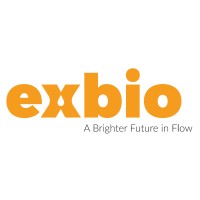CTLA-4 Monoclonal / Alexa Fluor 647 / BNI3
Product Details
| Description | CD152 / CTLA-4 is a homodimeric transmembrane protein similar to CD28 and binding the same ligands, i.e. CD80 (B7.1) and CD86 (B7.2), but with higher affinity. Unlike CD28 with important costimulating functions, CD152 acts as an important inhibitory receptor essential for modulation of the immune system. CD152 / CTLA-4 becomes transiently expressed on activated T cells and its malfunction can cause autoimmune diseases, such as insulin-dependent diabetes mellitus, Graves disease, Hashimoto thyroiditis, celiac disease, systemic lupus erythematosus, or thyroid-associated orbitopathy. | |
|---|---|---|
| Conjugate | Alexa Fluor 647 | |
| Clone | BNI3 | |
| Target Species | Human | |
| Applications | FC, ICC, IP, IHC-Fr | |
| Supplier | EXBIO | |
| Catalog # | Sign in to view product details, citations, and spectra | |
| Size | ||
| Price | ||
| Antigen | ||
| Host | ||
| Isotype |
About CTLA-4
This gene is a member of the immunoglobulin superfamily and encodes a protein which transmits an inhibitory signal to T cells. The protein contains a V domain, a transmembrane domain, and a cytoplasmic tail. Alternate transcriptional splice variants, encoding different isoforms, have been characterized. The membrane-bound isoform functions as a homodimer interconnected by a disulfide bond, while the soluble isoform functions as a monomer. Mutations in this gene have been associated with insulin-dependent diabetes mellitus, Graves disease, Hashimoto thyroiditis, celiac disease, systemic lupus erythematosus, thyroid-associated orbitopathy, and other autoimmune diseases. [provided by RefSeq, Jul 2008]
This gene is a member of the immunoglobulin superfamily and encodes a protein which transmits an inhibitory signal to T cells. The protein contains a V domain, a transmembrane domain, and a cytoplasmic tail. Alternate transcriptional splice variants, encoding different isoforms, have been characterized. The membrane-bound isoform functions as a homodimer interconnected by a disulfide bond, while the soluble isoform functions as a monomer. Mutations in this gene have been associated with insulin-dependent diabetes mellitus, Graves disease, Hashimoto thyroiditis, celiac disease, systemic lupus erythematosus, thyroid-associated orbitopathy, and other autoimmune diseases. [provided by RefSeq, Jul 2008]
About Alexa Fluor 647
Alexa Fluor™ 647 (AF647, Alexa 647) has an excitation peak at 650 nm and an emission peak at 665 nm, and is spectrally similar to Cy®5 (GE Healthcare), iFluor® 647 (ATT Bioquest), and DyLight™ 650 (Thermo Fisher Scientific). Alexa 647 is commonly used for flow cytometry, microscopy, super-resolution microscopy applications. It is very bright, photostable, and pH insensitive, all of which contribute to sensitive detection while using this dye.
Alexa Fluor™ 647 (AF647, Alexa 647) has an excitation peak at 650 nm and an emission peak at 665 nm, and is spectrally similar to Cy®5 (GE Healthcare), iFluor® 647 (ATT Bioquest), and DyLight™ 650 (Thermo Fisher Scientific). Alexa 647 is commonly used for flow cytometry, microscopy, super-resolution microscopy applications. It is very bright, photostable, and pH insensitive, all of which contribute to sensitive detection while using this dye.
Experiment Design Tools
Panel Builders
Looking to design a Microscopy or Flow Cytometry experiment?
Validation References
Reviews & Ratings
| Reviews |
|---|
Looking for more options?
1405 CTLA-4 antibodies from over 41 suppliers available with over 71 conjugates.





